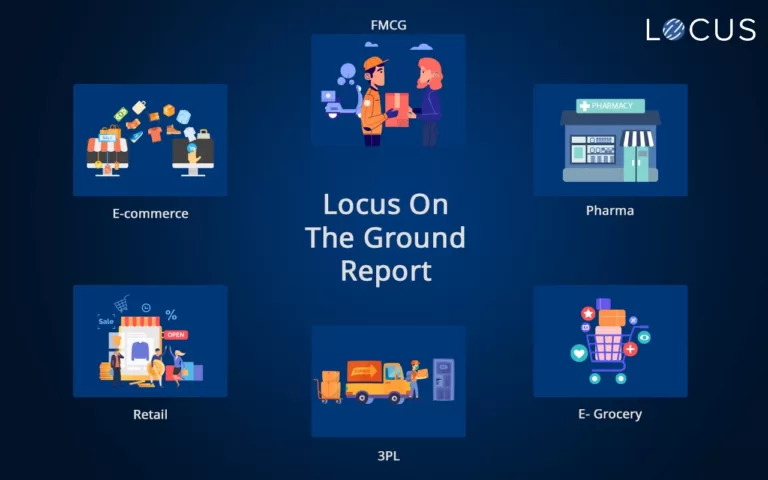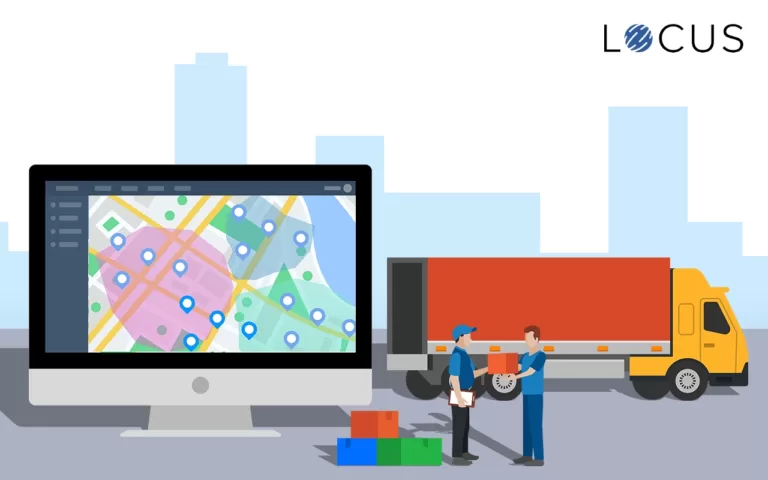Delivery Experience, Fleet Optimization, Grocery, Last Mile Delivery Optimization, Supply Chain Optimization
Grocery is now everybody’s best friend
May 11, 2020
7 mins read

US- Subway, Moe’s Southwest Grill, Panera Bread
India- Zomato, Swiggy
The UK- UberEats, Deliveroo
Ride hailing companies Uber, Lyft.
What connects these varied companies?
Quite the zinger of a question, eh?
While some of them have a food business connection, a few others are from completely different sectors.
Well, don’t fret too much. The answer is – Grocery.
Yup, grocery is now a part of all their businesses because of the COVID-19 pandemic. And mind you, they aren’t the only ones.
What does On-Demand Grocery Delivery mean for brands?
With the food business – be it individual restaurants chains, or food delivery businesses – being heavily impacted by the prevailing situation on ground, Grocery delivery has now become a way to cater to the prevailing customer needs and also generate revenue.
Take this for starters, Business Intelligence estimates that 43% of US consumers will have purchased groceries online by June.
Grocery is now the cynosure of all eyes.
For brands this means that they can keep serving their loyal customers during this period and also onboard new customers. It also means that they don’t lose the very crucial mind share they have earned till date.
Digitalcommerce360’s new report titled ‘Grocery retailers adapt as coronavirus upends shopping patterns’ had this to say, “U.S. online sales of consumer packaged goods (CPG) – the kinds of items typically sold in grocery stores—grew 56% for the one week ending April 18, compared to the same period a year earlier, according to data from research and polling firm Nielsen and Rakuten Intelligence, which tracks online sales via consumers’ email receipts. The most significant sales gain among CPG categories was food, up 69.5% year-over-year for the week ending April 18, Nielsen and Rakuten found.”
Such is the demand for online grocery that even consumers who previously avoided E-grocery are now forced to rely on these apps. While it may seem like a temporary trend, it might very well convert a sizable chunk of the first time users into loyalists.
“The household penetration rate of grocery delivery and “click-and-collect” pickup services in the U.S. rose to 31% on March 23 to March 25, compared to 13% just six months earlier, according to Brick Meets Click. There have also been plenty of new adopters. More than 40% of Americans who ordered grocery delivery the week ending March 13 tried it for the first time,” says the JLL report titled How COVID-19 is changing the grocery business.
Not just in the US, online grocery is picking up across regions. The Covid-19 pandemic is akin to a ‘peak delivery’ period which usually happens around festivals. There are now a flurry of essential deliveries all across the globe.
According to a news report in Reuters, more than 1,000 grocery and convenience stores were on UberEats’ app in Europe and more than 3,500 globally. This is helping consumers across countries like Britain, France, Spain, Italy, Portugal and Sweden.
UberEats has partnered with the French supermarket Carrefour in Paris to source food and other products. In Spain, it has teamed up with Galp in 15 cities including Madrid, Valencia and Seville.
If that is not enough, UberEats’ parent company, the ride hailing giant Uber and its competitor Lyft have also entered the fray. They are utilizing their now dormant cabs to do the last-mile fulfillment of grocery deliveries.
Read about FMCG Distribution Supply Chain with a Comprehensive TMS Solution
What does this translate into for customers?
The customer is now spoilt for choice. And during a global pandemic, it is in fact a good thing. If not from one source, the customer can get essentials from another.
Take the example of the Indian food delivery company Swiggy. It now does grocery delivery across 120+ cities and has tied up with brands like P&G, Marico, Hindustan Unilever Limited (HUL), Dabur, Godrej, among others. Its close rival Zomato is also leaving no stone unturned to cater to the grocery demand.
As a customer, you can now order both food and grocery on these apps. What more can you ask for?
Where is this likely to go?
According to USA Today, “The deterioration of sales far outpaces the previous record decline of 3.9% that took place during the depths of the Great Recession in November 2008. Auto sales dropped 25.6%, while clothing store sales collapsed, sliding 50.5%. Restaurants and bars reported a nearly 27% fall in revenue.”
Know about Software as a Service (SaaS) in the Global Recession of 2020
With such a steep hit on sales, for many restaurant chains and food delivery companies, grocery might well be the moolah maker. The Food Industry Association’s April report estimates that around 77% shoppers have made a significant change in where they shop, with online shopping being the runaway winner.
“Many shoppers have increased or are shopping online for the first time, as almost one-half of Americans have shopped online for grocery-type items in the past month.
Many of these shoppers (17%) are new to online grocery shopping and recall no shopping for grocery-type items before this month, while others (4%) recall shopping previously for grocery-type items and have returned this month for the first time in a while,” adds the report.
It clearly signifies that online grocery shopping is here for the times to come. Restaurant chains and food delivery apps will only have to keep adapting to the growing grocery needs of consumers to stay relevant.
Take Subway for example. The company, under the initiative Subway Grocery, is selling sandwich ingredients, bread, cheese, vegetables and even cookies and chips to cater to the present consumer demand. The offering is available across California, Connecticut, Oregon, Tennessee and Washington.
How to build your business around a hyperlocal on-demand delivery model?
You never know, if there is good traction, grocery might become a core part of business models going forward too. With the situation looking quite grim for restaurants in the near future, grocery and meal subscriptions might really help them stay afloat.
Also, refrigerated logistics is expected to see a spike in demand in these times due to the increased need for grocery deliveries.
In this constantly evolving scenario, On-Demand Grocery Delivery might very well become a mainstay.
How can Logistics tech help for on-demand grocery delivery business?
With things on ground being very volatile, tech in logistics can go a long way in streamlining operations for companies looking to enter the On-Demand grocery delivery business. Here’s what tech can possibly do-
- Dynamic operating model management– Restaurant chains might have to change their operating models overnight to cater to the changing on-ground scenario due to COVID-19. Artificial intelligence-based tech can immediately enable these clients to manage the new scale of orders and assist in implementing a whole new operating model.
- Assigning Deliveries- Using the right tech platform one can assign deliveries only to riders who have the required permits and also cordon off red-alert zones and ensure that deliveries are done using alternate routes.
- Run ‘what-if’ scenarios– With the current on-ground situation, a lot of chains might want to simulate situations/scenarios before taking business decisions. Tech can help run ‘what-if’ scenarios to determine the best approach to a given scenario. Say, for example, an E-grocery company can decide whether to open an order window in a particular zone or keep it open for anyone to order.
- Priority order delivery– In such times, there might often be a need for preferential or priority order deliveries. The tech platform can offer a priority scheme to plan such deliveries like those pertaining to senior citizens, the specially-abled, or those most in need.
- Enable Contactless Delivery– Contactless delivery is the need of the hour. Tech platforms can enable this by using Electronic proof of delivery like a photo of the order item.
Source:

Related Tags:

Featured
Locus On The Ground April Report: The Ripple Effects of Lockdown
With countries across the world in various stages of lockdown, business sectors have been affected in different ways. While traditional FMCG is doing relatively well, other sectors have taken a hit. For this month’s Locus On The Ground April Report, we are focusing on the South & Southeast Asia markets. Locus, which has clients in […]
Read more
3PL
Zone-based routing is the need of the hour
Terms like Red, Amber, Green; Red, Orange, Green; phased opening; restrictions; have all become a crucial part of our lives in the last few weeks. With the world slowly opening up amidst the Covid-19 outbreak, supply chain and logistics is going to play a really crucial role in setting up the ‘new normal’. Team Locus caught up […]
Read moreMOST POPULAR
EDITOR’S PICKS
SUBSCRIBE TO OUR NEWSLETTER
Stay up to date with the latest marketing, sales, and service tips and news


Grocery is now everybody’s best friend